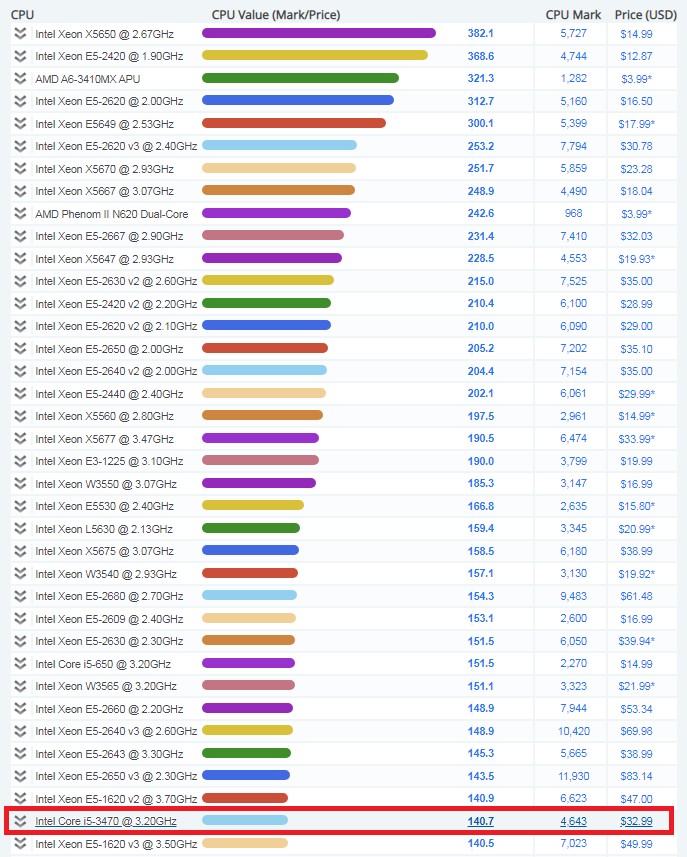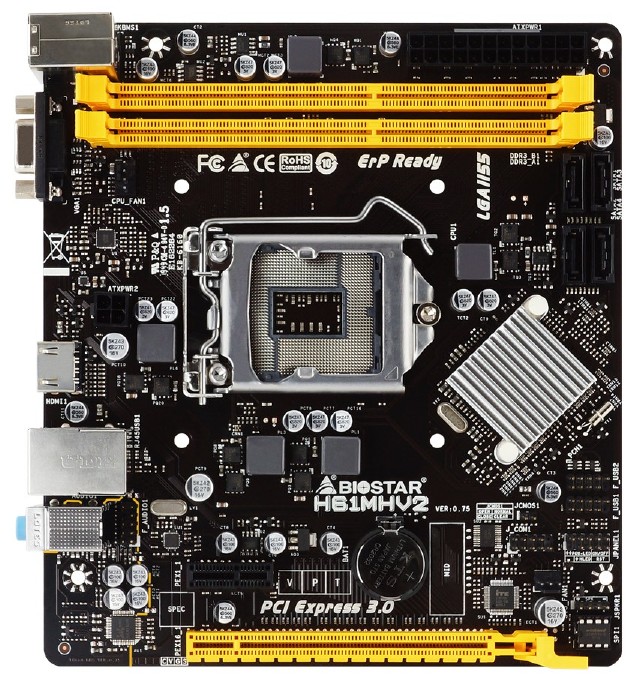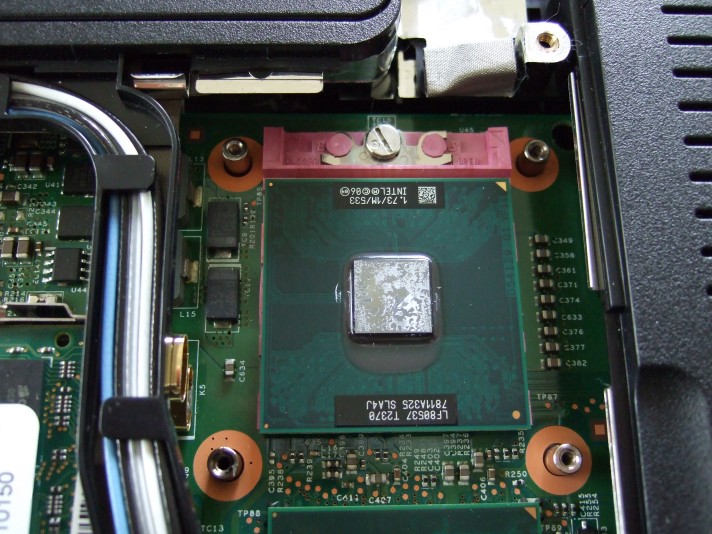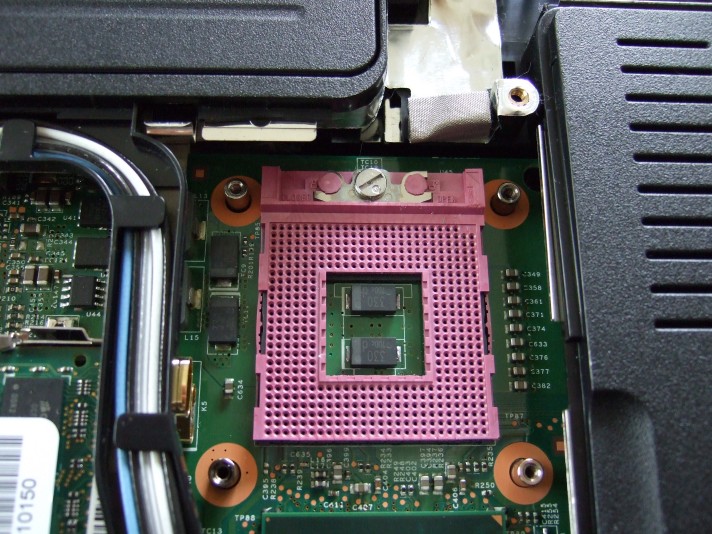PC upgrades for the new decade
by René Pawlitzek, rpawlitzek@hotmail.com
Going back to the future
The new decade requires faster computers. I have used my
Intel Celeron based computer since July 2012 and it served me very
well. I bought this Dual Core Sandy Bridge processor for CHF 49.90. A that time, it had the second best price/performance
ratio of all available CPUs. The Asrock motherboard has worked flawlessly for more than 8 years now. Why not keep it a bit longer?
In the past, I have always reused PC parts from my old computer when building a new one. The MaxData case, the Delta power
supply, the Logitech mouse and the Cherry keyboard are now 18 years old. I recently added a Western Digital SSD green to my system.
For the next upgrade the question was, should I get a faster CPU for the LGA1155 socket and does it make sense? After a bit
of research I came to the following conclusion: The Sandy Bridge (2nd Gen) and Ivy Bridge (3rd Gen) i5 and i7 CPUs have aged
quite well over the years and are reasonably priced in 2020. But for which CPU should I go for? The i5-2500K, the i7-2600K
or the i7-3770K? I looked at the
Top 100 All-Time Price Performance CPU list
to see which 2nd or 3rd Gen Intel CPU gives the best bang for the buck.
 Passmark Top 100 All-Time Price Performance CPUs
Passmark Top 100 All-Time Price Performance CPUs
The selection
The list is dominated by older Xeon Server CPUs and then comes the first 3rd Gen Ivy Bridge i5 CPU: the i5-3470, a quad-core
CPU from 2012. That's all good, but how does it compare to the old Intel Celeron G530 which it should replace. Turns out,
it is about three times as fast. Sweet. And how does it compare to an AMD Ryzen 5 2600 CPU with 6 cores and 12 threads.
Well, the Ryzen 5 2600 achieves a total of 13295 points in the passmark benchmark. The i5-3470 only scores 4649 points
in comparison. But how about single thread performance? The Ryzen 5 2600 achieves 2271 points and the i5-3470 1923 points.
Wow, that's only a difference of 18%. I was quite surprised to see this rather small difference. So even for today's standard,
the i5-3470 has very decent single thread performance which is quite good because not all programs and algorithms can make
use of multiple threads.
The hunt for a 3rd Gen Core i5
So the hunt for an i5-3470 began. Luckily this CPU has been used by Dell, HP, Acer, Lenovo and others for a lot of their PCs
in the past. It is widely available. And since most people look for an Intel i7, the 2nd and 3rd Gen i5 can be bought for
very little money. With a bit of patience, I was able to buy two i5-3470 CPUs for CHF 15.50 and CHF 18.00, respectively.
I also bought two new EKL 21909 coolers for CHF 20.95 each in addition to 16GB DDR3 RAM for CHF 77.00.
The assembly
Then came the time to assemble the PC. First, I had to update the BIOS to the latest version, because the old BIOS didn't
support all IvyBridge CPUs. Next, I removed the board from the case to change the CPU and to mount the EKL cooler. I
installed the 16GB DDR3 RAM and put the whole assembly back into the case. The entire process took less han 10 minutes.
But will it work? I pushed the switch, heard a noise and was greeted with the BIOS screen. I went into the BIOS to check
the CPU model and the memory configuration and to make some adjustments for the fan. Save, exit and boot. Wow, this thing
boots fast. I logged in to start the task manager. There they were: the 4 cores of the i5-3470. Not used much at all. I
had a smile on my face. My old PC had a new processor and it was running well. This is my PC for the next 5 years and it
cost me a mere CHF 113.45 (CHF 15.50 for the CPU, CHF 77.00 for the 16GB RAM + CHF 20.95 for the CPU Cooler). Not bad, eh?
 My old PC with a Core i5-3470 CPU, 16GB DDR3 RAM and an EKL 21909 cooler
My old PC with a Core i5-3470 CPU, 16GB DDR3 RAM and an EKL 21909 cooler
New LGA1155 motherboard
But what about the second Core i5-3470 that I bought? I always had a second PC to mess with. That PC had originally an AMD
Duron then an Intel D525 and in 2017 I replaced it with an AMD Athlon 5350, a four core processor with 25W TDP. This CPU has
never been a speed demon. Single thread performance is mediocre. That said the Athlon 5350 is a great CPU for a NAS. There
are plenty of people who have used it for that purpose. Okay, the Athlon was phased out but what about the Core i5-3470? It
needs a motherboard. New motherboards with the LGA1155 socket are hard to come by because there is not a lot of new old stock
available, at least not for a good price. While looking for a LGA1155 motherboard, I came across an
annoucement from Biostar
that they were about to release a new H61 based motherboard with a LGA1155 socket. Wonderful! A few days later I placed my
order.
 Newly released Biostar H61MHV2 motherboard for ancient Sandy- and Ivy-Bridge CPUs
Newly released Biostar H61MHV2 motherboard for ancient Sandy- and Ivy-Bridge CPUs
The second assembly
Weeks later I got the
Biostar H61MHV2.
After installing the i5-3470 and the EKL cooler, I put the board into the case, added
a 240 GB Western Digital SSD green and installed my favourite Linux Distro: Crunchbang++. Crunchbang++ is a lightweight distro
based on Debian 10 with the Openbox window manager. It runs very smoothly even on older hardware, for example my Dell Inspiron
laptop from 2008. But how will it run on the i5-3470? One word: amazing! The speed with which programs start and execute is
quite impressive, even with the spare 4GB DDR3-1066 memory that I used for this build. It is so much fun to work with this
setup, no comparison to the old Athlon 5350. And how much was this upgrade? CHF 18.00 for the CPU + CHF 64.80 for the
motherboard + CHF 20.95 for the cooler: CHF 103.75 in total. BTW, the i5-3470 is roughly 2.5 times faster than the AMD Athlon
5350.
 My new Linux PC with a Core i5-3470 CPU, Biostar H61MHV2 motherboard and 4GB DDR3 RAM
My new Linux PC with a Core i5-3470 CPU, Biostar H61MHV2 motherboard and 4GB DDR3 RAM
Used parts = phenomenal value
I enjoy watching
Tech Yes City, a YouTube channel from Brian in Australia.
He builds Gaming PCs with new and used parts. He claims that the price/performance ratio for used parts is simply phenomenal.
I can only agree with that after my expierence with the i5-3470!
A new NAS with the AMD 5350
And what happened to the AMD Ahtlon 5350? Was it turned into a NAS? Yes, indeed. The AMD Athlon 5350 with the AsRock AM1B-ITX
motherboard was put into a tiny LC-Power LC-1350mi case. I replaced the stock cooler with an Arctic Alpine M1 cooler to
make it more silent. Initially, I planned to use FreeNAS. However, FreeNAS has a minimum requirement of 8GB RAM. So I deciced
to got with OpenMediaVault instead. The new AMD-based NAS replaced my Zyxel NAS 326.
 AMD Athlon 5350 with 4GB RAM in a LC-POWER LC-1350mi case with OpenMediaVault NAS software
AMD Athlon 5350 with 4GB RAM in a LC-POWER LC-1350mi case with OpenMediaVault NAS software
To my surprise, I was able to find a brandnew Intel Core 2 Duo T8300 CPU for my old Dell Inspiron 1525 laptop from 2008. It cost me CHF 12.00
delivered from China to my door. This is the fastest CPU that one can put into this machine. The installation process is very simple:
 Remove the Dell Inspiron 1525 heat pipe assembly.
Remove the Dell Inspiron 1525 heat pipe assembly.
 Remove the old CPU, in my case the Intel T2370 CPU with 2 cores / 2 threads,
Remove the old CPU, in my case the Intel T2370 CPU with 2 cores / 2 threads,
1.73 GHz, 1MB L2 Cache, 533 MHz bus speed, 35W TDP, and 65 nm lithography.
 The PPGA478 socket makes replacing the CPU a breeze.
The PPGA478 socket makes replacing the CPU a breeze.
 Install the new CPU, in my case the Intel T8300 CPU with 2 cores / 2 threads,
Install the new CPU, in my case the Intel T8300 CPU with 2 cores / 2 threads,
2.4 GHz, 3MB L2 Cache, 800 MHz bus speed, 35W TDP, and 45 nm lithography
and put the heat pipe assembly back in place. Done!
Overall the machine is now roughly 60% faster than before (2.89 vs 4.55 GFlops, 1.45 vs 2.27 GFlops/Core).
Needless to say, that Crunchbang++ Linux runs noticeably faster now. That should do for another 5 years.









